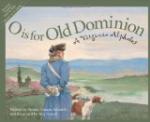This Mary Willis Marshall married Fielding Lewis Douthat, of the Harwood family, and went as a bride to Lower Weyanoke when the home there yet spoke bravely of colonial dignity, and the garden was still fragrant with trim bordered beds of bloom. Some years later, they moved to Upper Weyanoke where Mr. Douthat died. In the family circle as we found it were Mrs. Douthat, three daughters, and two sons.
[Illustration: An ancestress of Weyanoke.]
[Illustration: Chief-justice John Marshall.]
While the conversation ranged wide, from seventeenth century plantation grants to twentieth century houseboats, we found our attention drawn most to the reminiscences of Mrs. Douthat, told in the charming speech of a day that had time for the art of conversation. She had childhood recollections of the great Chief-Justice, and had treasured the family traditions concerning him. We got all too little both of the personal recollections and of the traditions; but they made it seem a very real John Marshall that this granddaughter of his was talking about.
Mrs. Douthat could not add much to the little that we already knew about a small brick building on the plantation that has long been pointed out from the steamers’ decks as one of the oldest buildings in the country. It stands on the river bluff near the present home. If as old as is usually supposed, it is doubtless one of the early garrison houses, and must have seen desperate days on this Indian-harassed peninsula.
In this house, up to the time of her death a few years ago, lived the old mammy of the family. She was one of the last of a type developed through generations of plantation life, and now disappearing with it. Her place was at the end of a long line of dusky nurses, the first of whom landed nearly three centuries ago at James Towne, and crooned to the children of the royal governors the weird minor lullabies of jungle-land.
At present, Elias, a gray-haired negro, lives in the little old house. Every morning he goes to see Mrs. Douthat; and he seldom varies the greeting: “How is you dis mawnin’, Miss Mary? I sut’n’y is glad to see you able to be up an’ ‘roun’. You know you an’ me is chil’en of de same day.”
Weyanoke, like most of the large plantations on the James, has a postoffice in the house. Our visit over, we gathered up quite a promising lot of mail and started homeward with the Commodore looking like a peripatetic branch of the rural free delivery. Evening was gathering in as we walked back along the field roads. The air was warm, a gentle breeze went rustling through the corn, and the autumn haze just veiled field and marsh and distant woods.
Upon reaching our shore-boat, we pushed out upon the marsh waterway. In our absence the tide had been slowly creeping up on reeds and rushes, had reached its height, and (leaving a brown, bubbly line upon each slender stalk to show that the law had been fulfilled) had started slowly down again.




